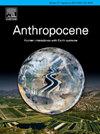持久性有机污染物的毒物基因组学:对生物多样性和传染病的潜在影响
IF 3.3
2区 地球科学
Q2 ENVIRONMENTAL SCIENCES
引用次数: 0
摘要
污染被认为是生物多样性丧失的主要原因之一。越来越多的证据也表明,污染是影响人类和其他动物的传染病出现或再次出现的重要风险因素。然而,人们对污染如何侵蚀生物多样性和助长传染病发生的机制和途径还缺乏深入研究。以 Dirty Dozen(艾氏剂、氯丹、二氯二苯三氯乙烷--滴滴涕、狄氏剂、二恶英、异狄氏剂、呋喃、七氯、六氯苯、灭蚁灵、多氯联苯--多氯联苯和毒杀芬)持久性有机污染物(POPs)为研究模型、在这篇文章中,我们通过毒物基因组学方法证明,这些持久性有机污染物会影响涉及免疫系统和新陈代谢过程以及其他生物途径的数千个基因(来自多种生物的 19,086 个基因)。其中一项主要发现表明,持久性有机污染物与激素受体基因(即 Esr1、Nr1i2 和 Ar 基因)的相互作用十分显著。这一发现凸显了这些污染物作为荷尔蒙干扰物的活性,可能对多种生物的新陈代谢和繁殖产生有害影响。这些污染物还具有重要的基因毒性,导致基因组不稳定和其他相关后果。总之,免疫系统的紊乱会有利于感染和病原体的传播,而污染物在多个身体系统中引发的新陈代谢变化和基因毒性效应会降低适应能力,损害物种在自然环境中的生存。这项探索性毒物基因组分析的结果代表了一个新的谜题,即污染日益成为生物多样性丧失和新发传染病的一个主要风险因素。本文章由计算机程序翻译,如有差异,请以英文原文为准。
Toxicogenomics of persistent organic pollutants: Potential impacts on biodiversity and infectious diseases
Pollution is recognized as one of the main causes of biodiversity loss. Growing evidence also points to pollution as an important risk factor for the emergence or reemergence of infectious diseases that affect humans and other animals. However, the mechanisms and pathways that explain how pollution erodes biodiversity and favors infectious diseases are poorly explored. Using the Dirty Dozen (aldrin, chlordane, dichlorodiphenyl trichloroethane - DDT, dieldrin, dioxins, endrin, furans, heptachlor, hexachlorobenzene, mirex, polychlorinated biphenyls - PCBs, and toxaphene) persistent organic pollutants (POPs) as a study model, in this article we demonstrate through toxicogenomic approaches that these POPs affect thousands of genes involved in the immune system and metabolic processes, among other biological pathways (n=19,086 genes from multiple organisms). One of the major findings indicate that POPs interact with hormone receptor genes prominently (i.e., Esr1, Nr1i2 and Ar genes). This finding highlights the activity of these pollutants as hormonal disruptors, with potentially deleterious consequences for the metabolism and reproduction of a wide range of species. These pollutants also have an important genotoxic activity, contributing to genomic instability and other related consequences. In summary, disturbances in the immune system can favor infection and the spread of pathogens, and changes in metabolism and genotoxic effects triggered by pollutants in multiple body systems can reduce fitness, harming the species’ survival in natural environments. The results of this exploratory toxicogenomic analysis represent a new piece in the puzzle that increasingly points to pollution as a major risk factor for both biodiversity loss and emerging infectious diseases.
求助全文
通过发布文献求助,成功后即可免费获取论文全文。
去求助
来源期刊

Anthropocene
Earth and Planetary Sciences-Earth and Planetary Sciences (miscellaneous)
CiteScore
6.30
自引率
0.00%
发文量
27
审稿时长
102 days
期刊介绍:
Anthropocene is an interdisciplinary journal that publishes peer-reviewed works addressing the nature, scale, and extent of interactions that people have with Earth processes and systems. The scope of the journal includes the significance of human activities in altering Earth’s landscapes, oceans, the atmosphere, cryosphere, and ecosystems over a range of time and space scales - from global phenomena over geologic eras to single isolated events - including the linkages, couplings, and feedbacks among physical, chemical, and biological components of Earth systems. The journal also addresses how such alterations can have profound effects on, and implications for, human society. As the scale and pace of human interactions with Earth systems have intensified in recent decades, understanding human-induced alterations in the past and present is critical to our ability to anticipate, mitigate, and adapt to changes in the future. The journal aims to provide a venue to focus research findings, discussions, and debates toward advancing predictive understanding of human interactions with Earth systems - one of the grand challenges of our time.
 求助内容:
求助内容: 应助结果提醒方式:
应助结果提醒方式:


